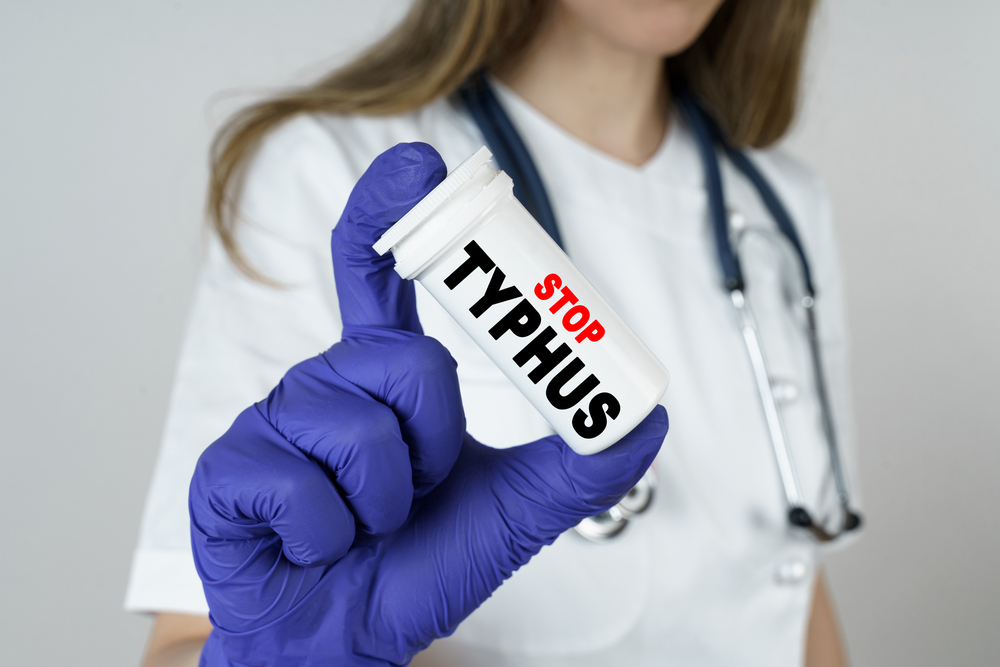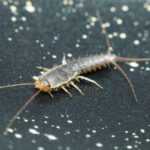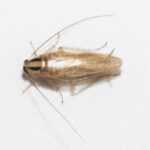Typhus: Causes, Symptoms, and Effective Treatments
Rickettsial bacteria transmitted by fleas, lice, and chiggers cause diseases in this group. These specific bacteria infect and spread illness, which causes serious symptoms including elevated body temperature, headache, and skin rashes. This paper outlines the various forms of these diseases along with their transmission agents, symptom presentation, and appropriate therapeutic approaches.
Rickettsial bacteria cause three diseases: murine typhus, epidemic typhus, and scrub typhus, each transmitted by different parasites.
Symptoms include fever, headache, chills, nausea, and rash, requiring immediate antibiotic treatment to prevent complications.
Preventative measures such as personal hygiene, rodent control, and insect repellent use help reduce infection risk.
Introduction to Typhus Group Diseases
Parasites like infected fleas, body lice, or chiggers transmit these infectious diseases by biting humans. The most common types include murine typhus (also known as flea-borne or endemic typhus), epidemic typhus, and scrub typhus. Infected fleas like the Oriental rat flea and cat flea, which infest rats and other small mammals, transmit murine typhus, a disease caused by Rickettsia typhi. An infected flea transmits the bacteria to humans through its bite or flea dirt. Flea borne typhus, a rickettsial disease, spreads through infected fleas often associated with rodents and urban environments. Infected body lice transmit epidemic typhus, caused by Rickettsia prowazekii, especially where sanitation is poor and crowding occurs. This disease also goes by the name louse borne typhus, which differs from flea borne typhus in its mode of transmission and causative bacteria. Chiggers, the larval stage of certain mites, spread scrub typhus resulting from Orientia tsutsugamushi. Historically, these fevers posed significant public health challenges, but improved hygiene has reduced their prevalence. They still spread in areas with inadequate sanitation or contact with infected animals. Understanding the different types and transmission methods helps prevent and control these illnesses effectively.
Types of Typhus Group Diseases
Three main types exist, each with unique transmission modes and risk profiles: murine typhus, epidemic typhus, and scrub typhus. Murine typhus occurs in tropical and subtropical regions worldwide, including southern California, South America, and other areas where it is considered a re-emerging infectious disease. Infected fleas found on rats, cats, and other small mammals spread murine typhus, the most common type. Infected body lice spread epidemic typhus, which tends to occur in places with poor sanitation and crowded living conditions, such as during natural disasters or in refugee camps. Chiggers transmit scrub typhus, which is prevalent in Southeast Asia, Japan, and northern Australia. Each type presents distinct symptoms and risk factors but requires prompt medical attention and antibiotic treatment.
Causes and Risk Factors
Bacteria transmit these illnesses through bites from infected fleas, lice, or chiggers. Exposure to these vectors increases risk, especially where sick or dead animals exist or where flea and rodent populations lack control. Outdoor workers such as landscapers, pest control workers, and construction workers face higher risk due to contact with wild animals and parasites. Poor sanitation and overcrowding also raise risk, particularly for epidemic typhus spread by body lice. Rising murine typhus cases in regions like southern California highlight the need for effective disease control. Using flea control products for pets, maintaining good hygiene, and implementing rodent control help reduce infection risk.
Symptoms of Typhus Group Diseases
Symptoms typically develop one to two weeks after bacterial exposure. Common signs include fever, headache, rash, and muscle aches. Many experience body aches, nausea, and vomiting. Severe cases cause high fever, intense headache, widespread rash, and may progress to severe illness, including organ damage, hospitalization, or death if untreated. Murine typhus generally causes milder symptoms but can still lead to complications if untreated. Scrub typhus may also cause swollen lymph nodes. Because symptoms resemble other illnesses, healthcare providers must treat promptly with antibiotics to prevent severe outcomes.
Diagnosis and Testing
Healthcare providers diagnose these infections through clinical evaluation and laboratory testing. They order blood tests to detect bacteria presence and review patient history for exposure likelihood. Skin biopsies near eschars (dark scab-like areas at bite sites) confirm diagnosis. Blood test results can take several weeks, so providers often begin antibiotics immediately if they suspect the disease, especially in known areas. Local health departments assist with diagnosis and management during outbreaks or high incidence. Informing providers about travel, outdoor activities, or possible exposure—even without recalling bites—ensures timely treatment.
Understanding the Diseases
Rickettsial bacteria transmitted by parasites like fleas, lice, and chiggers cause these illnesses, which affect human health. The group includes murine typhus, epidemic typhus, and scrub typhus, each with unique transmission agents and geographic patterns. Correct identification leads to proper diagnosis and treatment.
Infected Oriental rat and cat fleas transmit murine typhus caused by Rickettsia typhi. It presents milder symptoms but can cause serious health issues.
Infected body lice transmit epidemic typhus caused by Rickettsia prowazekii, causing severe outbreaks mainly in crowded, unsanitary living conditions.
Chiggers transmit scrub typhus caused by Orientia tsutsugamushi, mainly in rural Southeast Asia and Pacific islands. Despite distinct epidemiology, all types share symptoms treatable with antibiotics.
Causes of Infection
Fleas, lice, and chiggers transmit bacteria, specifically typhus bacteria. Infected fleas like Oriental rat and cat fleas become carriers after biting infected rats or cats and transmit murine typhus to humans. Bacteria enter humans through flea bites or contact with flea feces at the bite wound, which serves as the entry point for infection. This type occurs worldwide, including Southeast Asia, Africa, and the Middle East.
Infected body lice spread epidemic typhus by feeding on infected human blood, especially in crowded, unsanitary conditions, often during wars or disasters.
Chiggers transmit scrub typhus mainly in rural Southeast Asia and Pacific areas. Controlling these vectors and understanding their environments helps prevent infection.
Common Symptoms
Symptoms vary by type but commonly include:
- Fever
- Headache
- Chills
- Weakness
- Nausea
- Vomiting
- Body aches
- Rash appearing around the fifth day of illness
Fevers can reach above 104°F and last for days or weeks.
Other symptoms depend on infection type and severity. In rare cases, these infections cause severe complications or even death, especially if left untreated.
Murine typhus symptoms resemble other types, including fever, chills, headache, and nausea. Epidemic typhus symptoms develop within two weeks after exposure, including fever, headache, and rash. Scrub typhus causes fever, headache, and rash from chigger bites. Prompt medical care following early diagnosis is vital.
Types of Infection
The three main infections differ by vectors and epidemiology: murine typhus (fleas), epidemic typhus (lice), and scrub typhus (chiggers). Understanding these distinctions aids diagnosis and treatment.
Murine Typhus
Infected Oriental rat flea (Xenopsylla cheopis) and cat flea (Ctenocephalides felis) transmit murine typhus, which occurs in urban environments with close animal interactions. Symptoms resemble epidemic typhus but are milder, including fever, headache, chills, and occasional rash. Untreated cases cause discomfort and illness, rarely severe or fatal. Risk reduction depends on rodent control and hygiene.
Epidemic Typhus
Infected body lice (Pediculus humanus corporis) spread epidemic typhus, which mainly occurs in poor, crowded living conditions, such as refugee camps and prisons. Symptoms include high fever, headache, rash, and muscle pain. Untreated cases risk encephalitis, pneumonia, and severe complications. Timely antibiotics control disease and prevent outbreaks.
Scrub Typhus
Chiggers, larval mites carrying Orientia tsutsugamushi, transmit scrub typhus, which occurs mainly in rural Southeast Asia and Pacific islands with dense vegetation. Symptoms resemble other types, with fever, headache, and rash. Without treatment, severe complications including organ failure may occur. Prevention includes insect repellents and avoiding mite-infested areas.
Diagnosis and Laboratory Testing
Medical evaluation and laboratory tests ensure accurate diagnosis, as symptoms are nonspecific. Immunofluorescence assays (IFAs) detect recent rickettsial infections using samples from acute and convalescent stages. PCR-based nucleic acid amplification tests (NAATs) effectively confirm Rickettsia typhi infections early. Immunohistochemistry (IHC) can detect infections but requires specialized labs. Providers should start treatment immediately upon suspicion in endemic areas, even before lab confirmation.
Treatment Options
Prompt medical intervention prevents severe outcomes and speeds recovery. Doxycycline and chloramphenicol serve as primary antibiotics, reducing symptom duration and severity with improvement in 1-2 weeks. Alternatives like azithromycin and rifampicin serve for doxycycline failure or allergies. Immediate healthcare access remains vital, especially for epidemic typhus patients at risk of pneumonia, encephalitis, or organ failure.
Prevention Strategies
Protective measures and disease control stop spread. Using insect repellents targeting fleas and chiggers works effectively when outdoors. Permethrin-treated clothing offers extra protection in vector-prevalent regions. Personal hygiene and avoiding sick or dead animals remain essential. Rodent management and improved sanitation reduce outbreak risks. Proactive prevention minimizes infection likelihood.
Risk Factors and Public Health Concerns
Risk varies by infection type:
- Living near rodent-infested areas or owning flea-infected pets increases murine typhus risk.
- Epidemic typhus affects those in crowded, unsanitary conditions, such as refugee camps or disaster zones.
- Individuals with fever and vector contact or living in endemic areas should seek testing.
Preventing outbreaks requires strong public health interventions. Local health departments play vital roles in tracking and control. Combining sanitation improvements with rodent management effectively reduces risk.
Identifying causes, symptoms, and forms remains essential for prevention and management. Fleas, lice, and chiggers spread these diseases, each with unique transmission and distribution. Recognizing symptoms and seeking prompt care improves outcomes.
Prevention relies on personal hygiene, insect repellent use, and rodent control. Outbreaks require public health and pest control interventions. Understanding this health threat and proactive measures help protect individuals and communities.
Frequently Asked Questions
Anne Frank acquired typhus fever from where did she acquire the disease?
Unsanitary conditions at Bergen-Belsen led to Anne Frank contracting typhus after lice infested her bed and clothes. The facility’s poor sanitation contributed to widespread typhus among prisoners.
What is the main cause of typhus?
Rickettsia or orientia bacteria transmitted by bites from infected fleas, lice, and mites cause the disease. Proper sanitation and hygiene help prevent it.
What are the common symptoms?
Symptoms include fever, headache, chills, weakness, nausea, vomiting, body aches, and rash appearing around the fifth day. Early detection aids effective treatment.
How is diagnosis made?
Healthcare providers assess symptoms and conduct lab tests like immunofluorescence assays and PCR. Early accurate diagnosis enables timely treatment.
What are the main types?
Murine typhus, epidemic typhus, and scrub typhus are the three main types, spread by fleas, lice, and chiggers respectively. Knowing these helps prevention and treatment.





